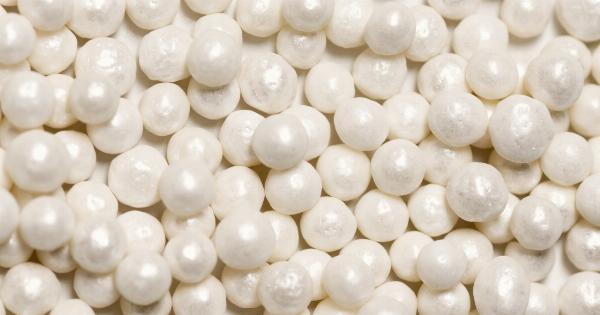Osteoporosis, a condition characterized by weak and brittle bones, is often associated with older adults. However, it can also affect children and adolescents, although it is less common.
While most people are aware of the prevalence and impact of osteoporosis in adults, the same cannot be said for children. In this article, we will explore the truth about osteoporosis in children, including its causes, symptoms, diagnosis, treatment, and prevention.
Causes of Osteoporosis in Children
There are various factors that can contribute to the development of osteoporosis in children. These include:.
1. Genetic Factors: Like many other medical conditions, genetics play a significant role in the risk of developing osteoporosis. Children with a family history of osteoporosis are more likely to be affected.
2. Chronic Medical Conditions: Certain chronic medical conditions, such as cystic fibrosis, celiac disease, inflammatory bowel disease, and juvenile arthritis, can increase the risk of osteoporosis in children.
3. Medications: Prolonged use of certain medications, such as corticosteroids (e.g., prednisone) for treating various conditions, can weaken the bones and lead to osteoporosis.
Symptoms of Osteoporosis in Children
Osteoporosis in children may not always exhibit specific symptoms, especially in its early stages. However, some common signs and symptoms include:.
1. Fractures: Children with osteoporosis may experience frequent fractures, even after minor trauma or activities.
2. Back Pain: Persistent back pain, particularly in the middle or lower back, can be a symptom of osteoporosis in children.
3. Decreased Height: Osteoporosis can affect the growth of children, leading to a noticeable decrease in height compared to their peers.
4. Poor Posture: Children with osteoporosis may have a stooped or hunched posture, also known as kyphosis.
Diagnosing Osteoporosis in Children
Diagnosing osteoporosis in children can be challenging as their bone density is still developing. However, several diagnostic methods can be used to assess bone health:.
1. Dual-Energy X-ray Absorptiometry (DXA): DXA scan is a commonly used and noninvasive technique to measure bone mineral density. It helps identify low bone density and diagnose osteoporosis.
2. Blood Tests: Blood tests can be conducted to measure specific markers related to bone turnover, which provide insights into bone health.
3. Genetic Testing: Genetic testing can help identify specific genetic mutations associated with increased osteoporosis risk.
Treating Osteoporosis in Children
The treatment of osteoporosis in children focuses on increasing bone density, reducing the risk of fractures, and managing any underlying medical conditions. The treatment options may include:.
1. Calcium and Vitamin D Supplements: Adequate intake of calcium and vitamin D is essential for bone health. Children with osteoporosis may require supplements to meet their nutritional needs.
2. Physical Activity: Engaging in weight-bearing exercises and activities that promote strength and balance can help improve bone health.
3. Medications: In certain cases, medications like bisphosphonates, hormone replacement therapy, and calcitonin may be prescribed to increase bone density and reduce the risk of fractures.
4. Management of Underlying Conditions: If osteoporosis is secondary to an underlying medical condition, managing that condition effectively can help improve bone health.
Preventing Osteoporosis in Children
Prevention is key when it comes to osteoporosis in children. Some preventive measures include:.
1. Adequate Nutrition: Providing a balanced diet rich in calcium, vitamin D, and other essential nutrients is crucial for bone health.
2. Physical Activity: Encouraging regular physical activity and exercises that strengthen bones and muscles can help promote healthy bone development.
3. Avoiding Smoking and Alcohol: Both smoking and excessive alcohol consumption can negatively impact bone health. It is important to educate children about the risks associated with these habits.
4. Regular check-ups: Regular visits to healthcare professionals allow for monitoring of bone health and early detection of any potential issues.
Conclusion
Osteoporosis in children, although less common than in adults, is a condition that requires attention and awareness.
Understanding the causes, symptoms, diagnosis, treatment, and prevention methods is essential in safeguarding the bone health of children. By promoting a healthy lifestyle, providing proper nutrition, and seeking timely medical intervention, we can protect our children from the detrimental effects of osteoporosis.































